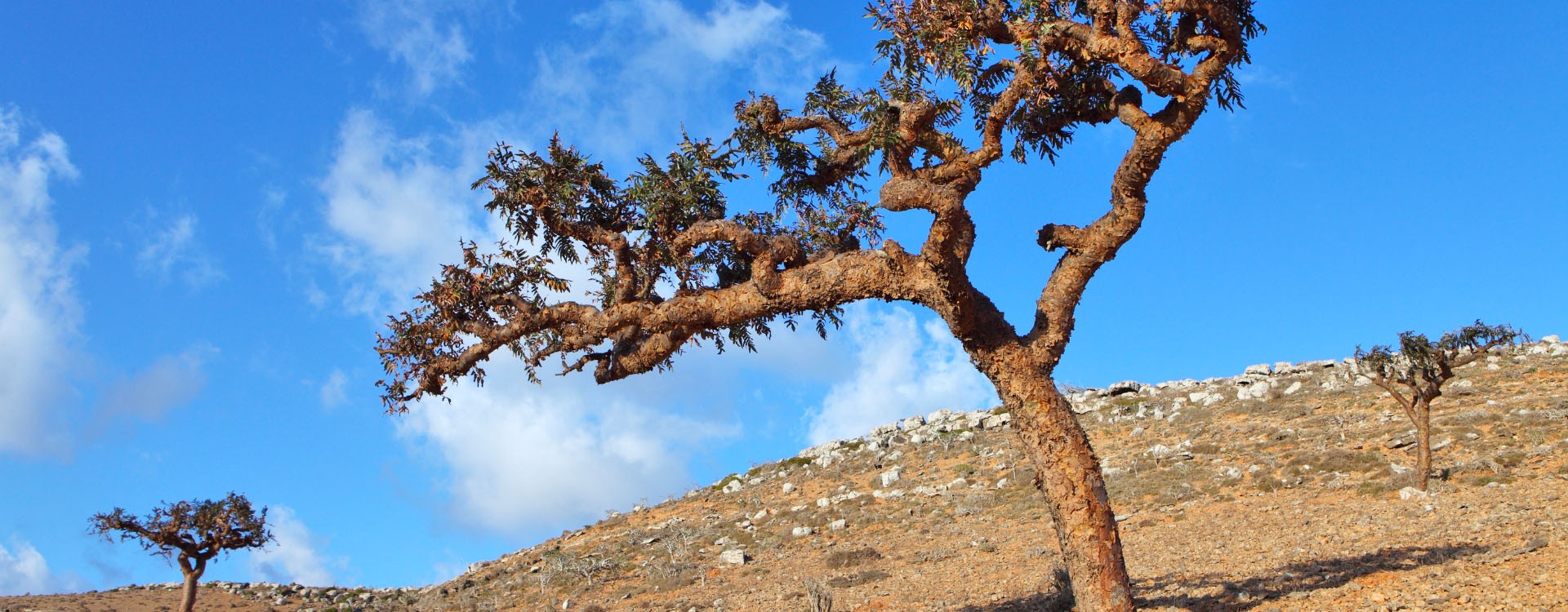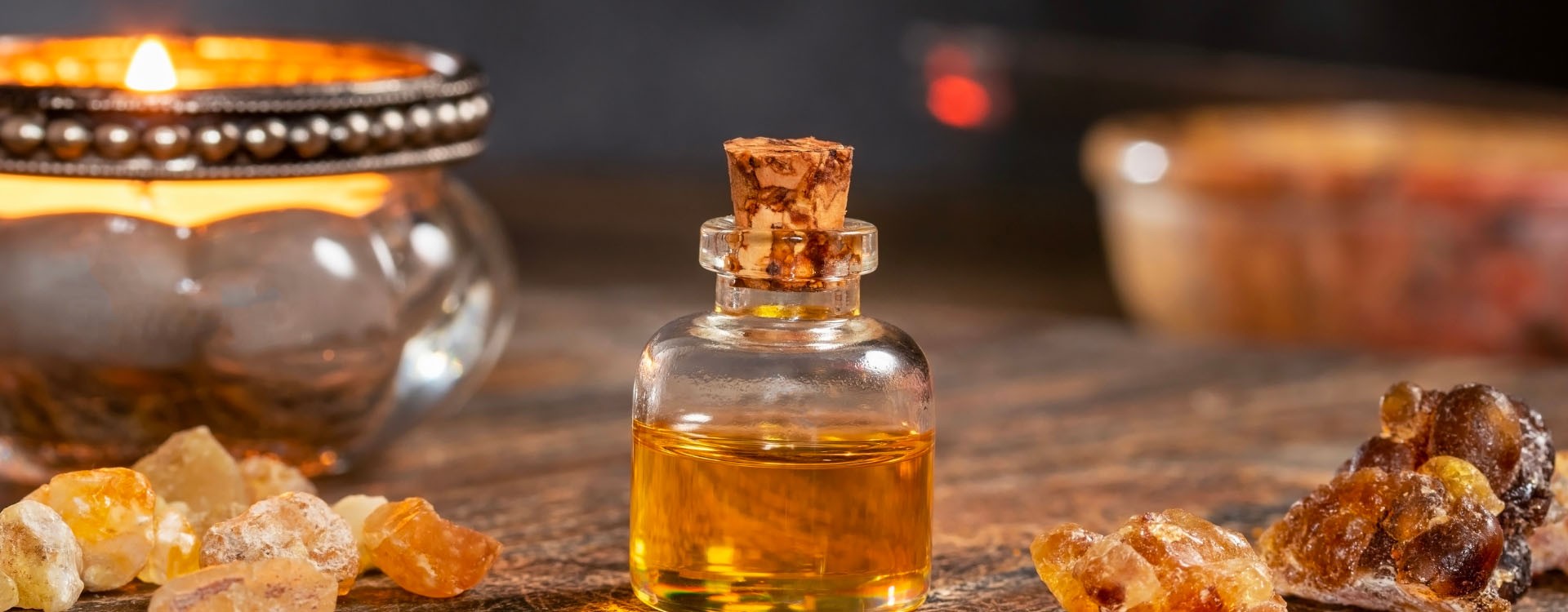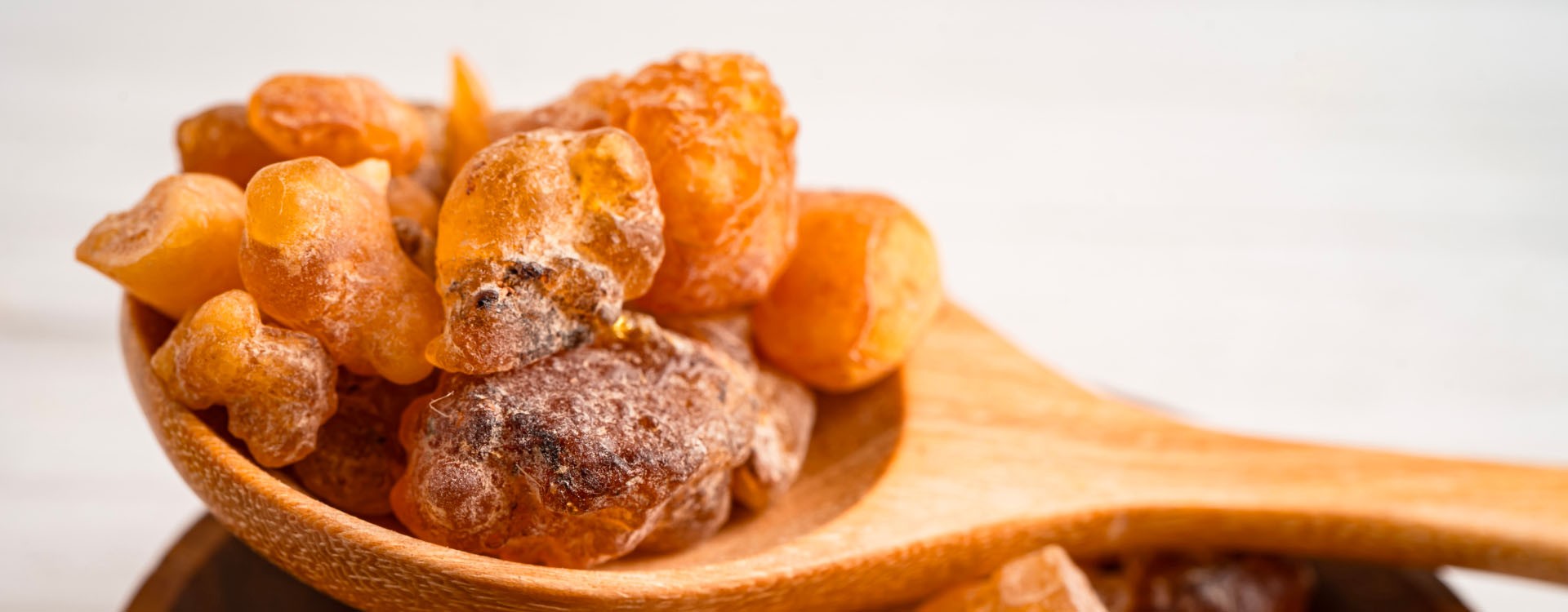Boswellia: benefits, side effects and advice on use

Discovering Boswellia
The Boswellia, a fascinating plant with impressive medicinal properties, plunges us into a world of mystery and discovery. Its precious resin is the jewel in the crown of this exploration, with a rich history and captivating anecdotes.
Thehistory of Boswellia dates back to ancient times, when this resin was considered a priceless treasure. The first references to the use of Boswellia can be found in ancient texts, notably in the medical writings of ancient Egypt and the Mesopotamian civilization. The ancient Egyptians incorporated it into their religious and body preservation practices, while the civilizations of Mesopotamia used it in traditional medicine for its curative virtues.
One of the most famous mentions of Boswellia is in the Bible, where it is one of the gifts offered by the Magi to the infant Jesus, symbolizing its importance and rarity.
Over the centuries, Boswellia has continued to be sought after for its therapeutic benefits, particularly in India, where it is a key component of Ayurveda, a traditional system of medicine. It was also traded on the Silk Roads, testifying to its value on international markets.
The ancient discovery of Boswellia is peppered with fascinating anecdotes. One of them tells how Alexander the Great discovered Boswellia during his conquest of India. He was so intrigued by the resin that he sent it to Greece, where it was burnt in temples in honor of the gods.
Another story dates back to the Roman Empire, when Emperor Nero is said to have burned an astronomical quantity of Boswellia during the death of his wife, Empress Poppea, as a sign of mourning. This anecdote testifies to the rarity and exceptional value of this resin.
These ancient stories illustrate how Boswellia has captivated mankind over the centuries, and how its discovery was marked by an unquenchable fascination for its mysterious properties and precious benefits.
Little-known assets
At the heart of Boswellia lie little-known active ingredients: terpenes and boswellic acids. These mysterious compounds are responsible for the remarkable medicinal properties of this age-old resin.
Boswellia's little-known active ingredients are terpenes and boswellic acids. These chemical compounds, present in the resin of the tree that gives Oliban Oman incense resinincense resin, play a key role in its health benefits. Terpenes are responsible for the resin's characteristic aroma, while boswellic acids possess powerful medicinal properties.
Boswellia's terpenes have anti-inflammatory and antioxidant properties. They act by reducing inflammation and neutralizing free radicals, contributing to healthy joints and skin.
The boswellic acids are among the most valuable components of Boswellia. They have been shown to be effective in relieving pain and inflammation, particularly in the case of chronic inflammatory diseases such as arthritis. What's more, these acids can help regulate the immune system, boosting the body's response to infections.
Combined, Boswellia's terpenes and boswellic acids make it a versatile natural remedy, capable of supporting health in a variety of ways. Their understanding and exploration continue to attract the attention of the scientific community and researchers seeking new medical applications.
Traditional uses revisited
Long before modern discoveries were made about the properties of Boswellia, this resin was a little-known treasure trove of traditional herbal medicine. In various ancient cultures, Boswellia played a significant role as a versatile natural remedy.
In Ayurvedic medicine: Boswellia, known as "Shallaki" in Sanskrit, has been an essential component of Ayurvedic medicine for centuries. It was traditionally used to treat a variety of inflammatory, joint and digestive disorders.
In traditional Chinese medicine: under the name "Ru Xiang" or "Hou Yao," Boswellia was used to relieve pain and inflammation, particularly in the context of joint problems.
In traditional African medicine: Some African tribes used Boswellia resin to treat a variety of ailments, including skin infections and respiratory problems.
The traditional uses of Boswellia have given rise to a multitude of ancestral recipes. These preparations, handed down from generation to generation, were designed to relieve a variety of common ailments. For example, Boswellia-based ointments were used to soothe joint pain, while resin infusions were used to alleviate digestive disorders.
Today, as modern science confirms the benefits of Boswellia, these age-old recipes are enjoying a renaissance. Herbalists and natural remedy enthusiasts are exploring new ways of using this precious resin in alternative medicine. This reinterpretation of traditional uses offers fascinating potential for harnessing the full benefits of Boswellia in the modern world.
A ray of hope for modern healthcare
Boswellia, once little-known, is now attracting a great deal of interest in the scientific and medical community for its many beneficial properties. Recent studies have revealed new facets of this natural treasure.
Boswellia's active compounds, in particular boswellic acids, have been shown to reduce inflammation. Research has shown that these compounds inhibit inflammatory enzymes, which can help relieve pain and improve the symptoms of certain inflammatory conditions, such as arthritis.
Boswellia can also have an impact on the immune system by regulating the inflammatory response. This is of particular interest in the field of immunology, where the balance between suppressing excessive inflammation and maintaining an effective immune response is crucial.
Thanks to recent discoveries about the benefits of Boswellia, this resin is increasingly integrated into modern medicine.
The extracts of Boswellia are now commonly available as dietary supplements. These supplements aim to deliver the resin's benefits in a concentrated, convenient way. They are often used to support joint and immune system health.
Boswellia's anti-inflammatory properties have led to its inclusion in the formulation of certain medicines and creams. These products are used to treat a variety of inflammatory conditions, including osteoarthritis and certain skin conditions.
Boswellia is also used in alternative medicine, where the emphasis is on natural, holistic treatments. Practitioners of alternative medicine sometimes include Boswellia in treatment protocols for specific ailments.
The emergence of new medical discoveries and the increasing integration of Boswellia into modern medicine are giving rise to renewed hope for the treatment of a variety of ailments. As research continues, it is likely that new applications and uses will emerge, offering a promising future for this age-old resin.
The contours of contemporary use
Boswellia is not confined to traditional medicine and medical research. It has also found its place in modern daily life. Here are just a few of its contemporary applications.
Boswellia essential oil is increasingly used in aromatherapy. Its soothing, earthy fragrance makes it a popular choice for creating a relaxing ambience in homes, spas and wellness centers. It is diffused into the air to promote relaxation and calm.
Natural skincare and beauty products often incorporate Boswellia for its beneficial properties for the skin. It is used in creams, lotions and serums to help moisturize skin, reduce signs of aging and improve elasticity.
Perfumers are increasingly interested in Boswellia essential oil for its warm, woody notes. It is used to create unique, sophisticated fragrances that appeal to lovers of authentic scents.
People all over the world have incorporated Boswellia into their daily routine and testify to its benefits. Many report an improvement in their well-being, whether through reduced stress, better joint health or healthier skin.
Testimonials include users who incorporateBoswellia incense into their morning meditation to create an atmosphere conducive to concentration and relaxation. Others include Boswellia-based products in their skincare rituals and notice a noticeable improvement in the texture and appearance of their skin.
These testimonials underline the growing importance of Boswellia in contemporary life as a valuable resource for health, well-being and beauty. They also highlight the versatility of this age-old resin and its potential to improve the quality of everyday life.
Conclusion
In this journey through Boswellia, we discover a mysterious resin with ancient origins. From its historic discovery to its rediscovery in modern medicine, Boswellia has fascinated us with its many secrets.
The Boswellia, with its fascinating history and contemporary applications, continues to arouse admiration and interest. This age-old resin reminds us that nature's treasures can enrich our lives in unexpected and valuable ways. So, whether you're looking to improve your health, relax or simply explore new dimensions of well-being, Boswellia is here to accompany you on this fascinating journey.



